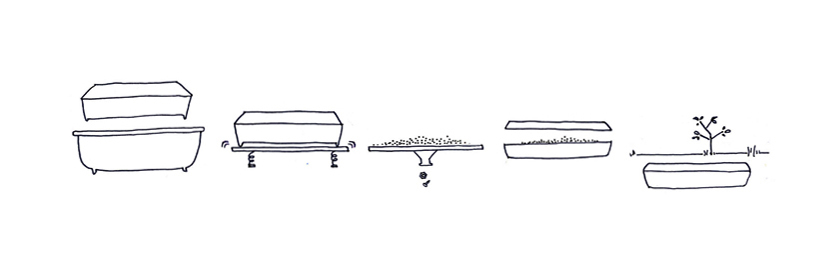
dust to earth by J. Larsson from sweden
designer's own words:
BACKGROUND
For hundreds of years the western society has buried its dead by the same two methods. Earth burials and cremation have been primarily based on religious practices long before we had scientific knowledge of the effects. But like with most other things, we are facing an inevitable change. Groundwater poisoning, heavy metal fumes and energy consumption are causing huge environmental problems that are rarely known or discussed.
But there are movements towards a more active involvement in how you choose to be buried. I have researched these movements (mainly under the name of Green Burial Movement) along with an already existing method of a far more sustainable method of burial called promession. Rather than suggesting what death care could look like tomorrow, I want to present what it should already be like today.
Promession was developed by Swedish biologist Susanne Wiigh-Mäsak. In short, the body is submerged in liquid nitrogen and then exposed to a very small vibration, causing it to crumble into dust. This dust can easily have metals and water removed from it. Left is merely carbon and nutrients that can be buried in the shallows of the earth, enabling a full return to the ecosystem within only a few months. Ever since this method was developed there has been people wishing to be buried by it. 2012 there were 12 people already deceased and kept frozen in morgues, (some of them since many years back) while their families waited hoping to grant their wish to be buried by promession.
In whole, my research of burial traditions and laws tells a pretty familiar story of why this industry is facing problems and why methods like promession is not already available. There's an issue of religious organizations resisting change, laws being interpreted and companies unwilling to risk profits. But maybe most importantly there's the issue of us, members of society, having become passive in this process, given the impression that death care is not something to be redefined. I have aimed my project at painting a scenario where new methods for burials, in my case promession, could offer us new emotional values to go along with it, and perhaps make death care a more natural part of everyday life.
DESIGN
In order for promessioned dust to decompose in a healthy manner, a container of decomposable material is needed for the burial, preferably cornstarch. This is what I've designed, aiming to give shape to a container as far from the traditional, monolithic and symmetrical aesthetics of urns as possible.
I wanted it to express peacefulness, rest, but also associations with nature and the beginning of new things. I also wanted it to feel as if it belongs in either the hands of a loved one or in the ground, never a flat surface. I added a ribbed structure to the bottom surface to enhance this association, to not make in feel slippery in one's grip and also to communicate its merging with the soil.
Size was a very important factor. The process of cremating promessioned dust leaves a very small volume, but just because the container could be so small it would fit into one hand doesn't mean that it should. I wanted to encourage a two handed grip and guide the hands to the bottom of the container.
The smooth top part is the lid, applied through a snap function, its parting line blending with the bottom part's structure. After being sealed it should feel as though there's no way to reopen it. Handling it should feel safe, and final. The concave surface on the very top is for placing seeds of whatever one would wish to see grow from the pure nourishment that the dust will offer.
This possibility could hopefully refocus our views on burying the deceased; we would also be planting something new. The fact that the dust and its container will be completely gone within a few months is a good thing, new life will replace it. Maybe, just maybe, it could even help us let go. Further more, spaces for burials could be redefined and take a more active roll in suburban and urban areas. The dead stay part of the city, the greens grow as the city grows.
Josefine Larsson
April 16, 2013
A simplified description of the existing method promession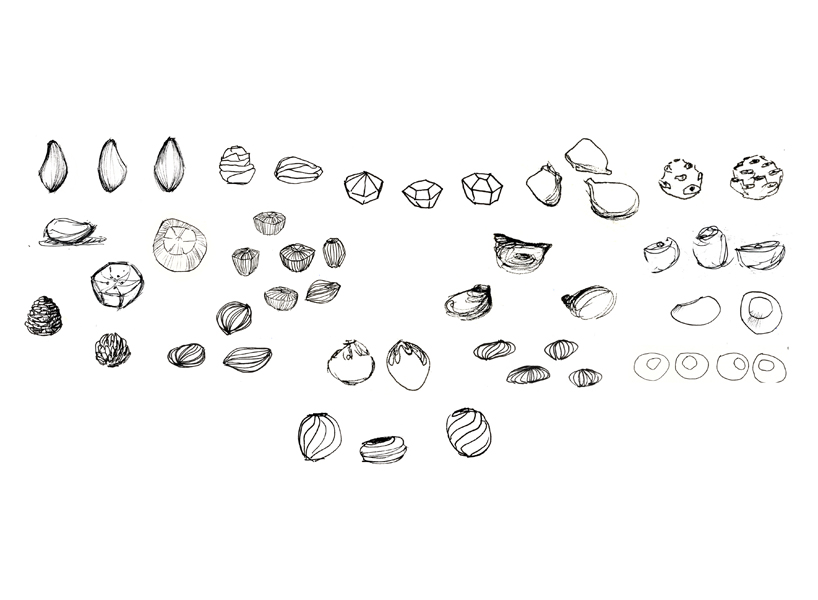 Sketches of urns[jwplayer config=”mplayer” width=”818px” height=”600px” file=”https://static.designboom.com/wp-content/compsub/371692/2013-04-16/video_1_1366145737_444483cfa1d62edc725db9b083fa2d32.flv” html5_file=”https://static.designboom.com/wp-content/compsub/371692/2013-04-16/video_1_1366145737_444483cfa1d62edc725db9b083fa2d32.flv” download_file=”https://static.designboom.com/wp-content/compsub/371692/2013-04-16/video_1_1366145737_444483cfa1d62edc725db9b083fa2d32.flv”]video
Sketches of urns[jwplayer config=”mplayer” width=”818px” height=”600px” file=”https://static.designboom.com/wp-content/compsub/371692/2013-04-16/video_1_1366145737_444483cfa1d62edc725db9b083fa2d32.flv” html5_file=”https://static.designboom.com/wp-content/compsub/371692/2013-04-16/video_1_1366145737_444483cfa1d62edc725db9b083fa2d32.flv” download_file=”https://static.designboom.com/wp-content/compsub/371692/2013-04-16/video_1_1366145737_444483cfa1d62edc725db9b083fa2d32.flv”]video
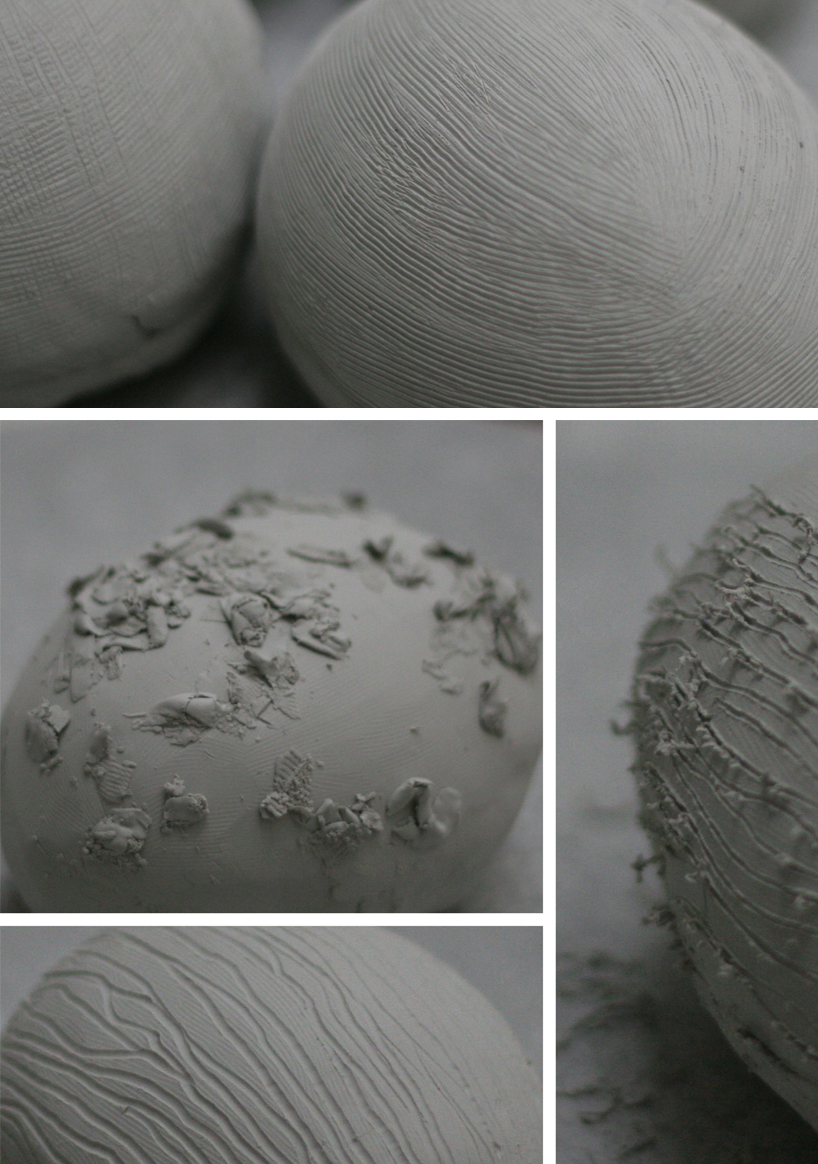 Experiments with rough, natural looking surfaces
Experiments with rough, natural looking surfaces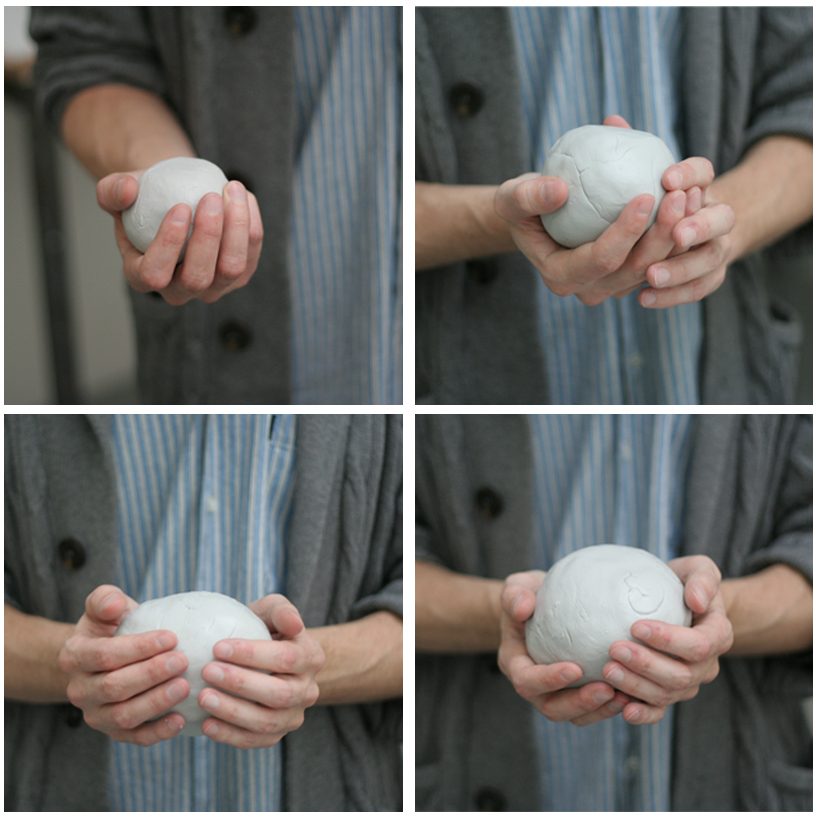 Studies in sizes and grips
Studies in sizes and grips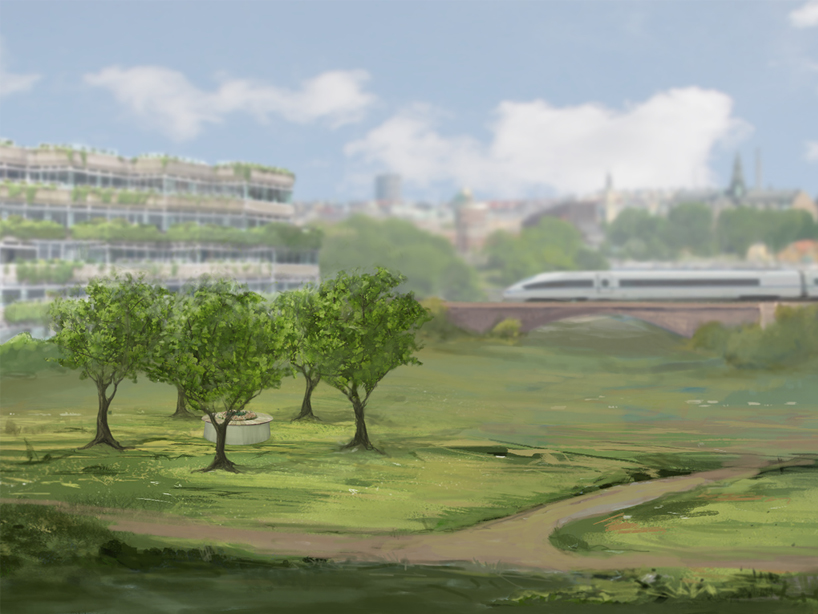 Illustration of urban burial site
Illustration of urban burial site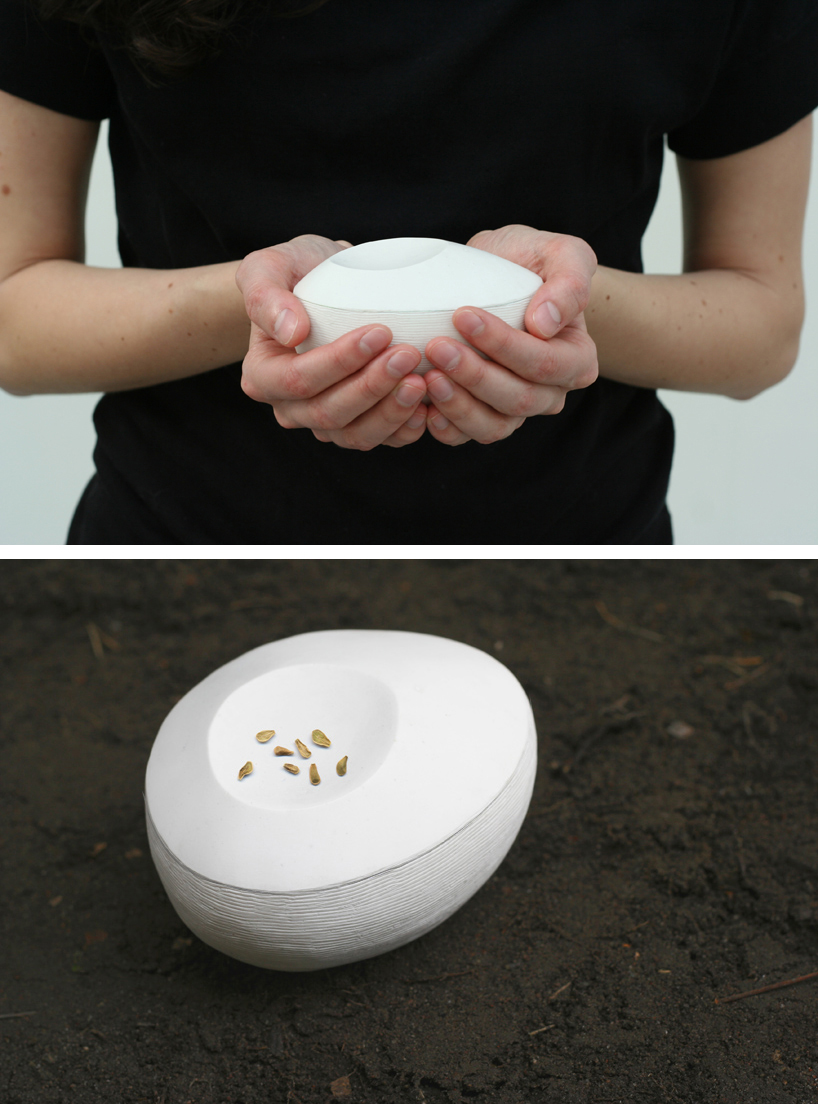 A snap shut container for dust to be planted with seeds
A snap shut container for dust to be planted with seeds